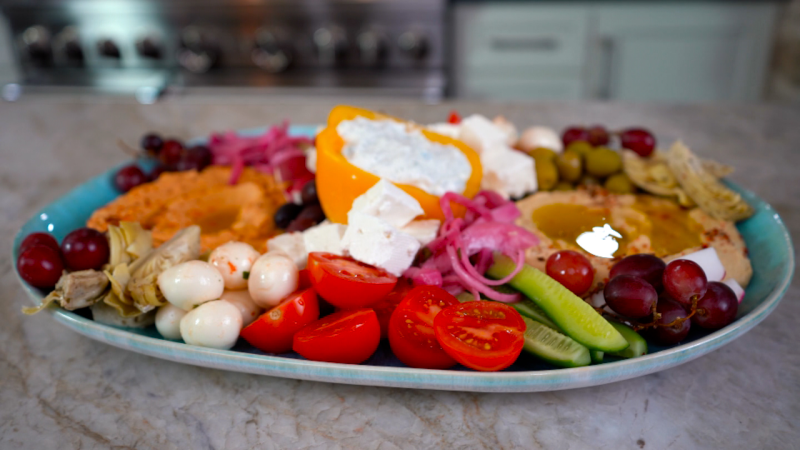Your preference for spicy foods may be all in your head

In my family, I am officially known as “Baby Spice.” No, my grown children are not comparing me to one of the Spice Girls, the pop music group that wowed young fans in the 1990s. I earned that moniker because I am a total wimp when it comes to eating anything remotely hot.
“Are you sure that sauce isn’t spicy?” I ask without fail before I order in a restaurant. “Oh, no, not at all,” I am assured every time.
When the meal comes, everyone at my table rolls an eye as I gasp and choke, reaching for the water that doesn’t help.
“Here, eat a piece of bread,” one of my kids will say, with resignation. “And yes, I’ll trade meals with you.”
I’m sure I’m not alone in my aversion. Yet many people adore fiery, overly spiced foods — the hotter the better. Some even seek out white-hot foods, excited to challenge their digestion to the most searing peppers on the planet.
“There’s never been a spice I can’t handle, bring it on,” my husband used to say. He would sit and eat those foods with pleasure, with only a few beads of sweat on his brow.
How can such extremes exist in human behavior? According to a new study, these reactions may be due to how expectations shape sensory experiences. In other words, I may find spicy food overwhelming simply because I expect it to be.
“Expectations are powerful,” said Dr. Susan Albers, a clinical psychologist at the Cleveland Clinic in Ohio, who was not involved with the study.
“They can transform a burning sensation into a pleasurable experience or an unpleasant one, depending on how we anticipate the taste.”
Hotter in the mind’s eye than in reality
In the study, published Tuesday in the journal PLOS Biology, Chinese researchers scanned the brains of 24 people who liked spicy foods and 22 who did not.
During the brain imaging, each person received 30 squirts of mild and high intensity hot sauce, followed by water, while being shown two blue-colored peppers. The peppers gave participants no clue as to the spiciness of the hot sauce.
Then the test was repeated with the same hot sauces. This time, however, participants were shown two red peppers when the hottest sauce was squirted into their mouth, one red and one blue pepper when the milder sauce was administered, and two blue peppers when water was provided.
Parts of the brain linked to pleasure lit up in people who said they loved hot and spicy foods — in many cases, the hotter the spice, the more intense the pleasure.
Not so for the brains of those who disliked spice — their pain centers lit up when hot sauce was administered in both trials. However, the experience of pain was dramatically increased in the second trial when the participant knew they would be given the hottest sauce.
“I was surprised by how strongly negative expectations amplified the brain’s pain response, even though the stimulus was the same,” said lead author Yi Luo, an investigator in the school of psychology and cognitive science at East China Normal University in Shanghai.
“This highlights how our anticipation of discomfort can significantly intensify the experience of pain,” Luo said in a statement.
There are other reasons — such as genetics — for why we might prefer one type of food over another. Take cilantro: People with a certain gene say cilantro tastes like soap, while others enjoy the taste.
“Some of it could be expectations, but some could also be how you’re biologically wired to experience food,” Albers said. “We all taste the exact same foods in entirely different ways. Your taste preferences are like a fingerprint, totally unique.”
Want to eat spicier food?
My family would be thrilled if I were to transform from spice wimp into spice lover because we could then all enjoy foods with a bit more heat (and I would stop stealing their less spicy meals).
If you want to change your mind about spice, too, here are Albers’ suggestions:
Reframe negative associations: If you dislike spicy food, try to approach it with curiosity rather than aversion, Albers said: “This shift in mindset might alter your perception and experience.”
Experiment with different spices: Focus on the full sensory experience, she said. Notice the flavors, textures and heat sensations of the different spices without judgment.
Use visual cues carefully: Pay attention to how visual cues to a food, such as menu descriptions or food presentation, affect your expectations, Albers said. Use this awareness to manage your anticipation of the spicy experience.
“Take paprika. Because it’s red, some people believe it will be spicy, and it’s not,” Albers said. “A curry is a different kind of spice than a chili pepper. Remember expectations can significantly influence your experience.”
Listen to your body: As you eat spicy food, check in with your body’s responses. Notice where you feel the heat and how it changes over time, so you will understand your personal tolerance and enjoyment threshold.
“If you want to increase your spice tolerance, do so slowly and mindfully. Start with milder spices and gradually work your way up,” Albers said. “There’s no ‘right’ level of spiciness — it’s about what feels good to you.”
Pair spicy foods thoughtfully: Consider balancing spicy flavors with cooling elements, such as a piece of cheese or bread. Take little bites at first, Albers said.
“This can enhance your overall enjoyment and make the experience more manageable,” she said.
Spice lovers beware
What about Team Spice? It is possible that some things are just too hot.
On the Scoville scale, which measures the spiciness of a pepper, a Carolina Reaper pepper is around 1.7 million Scoville Heat Units, while a Naga Viper is around 1.4 million units. A jalapeño pepper averages 3,500 to 8,000 units on the Scoville scale.
“Spicy foods can increase your metabolism, your heart rate, cause vomiting and gastric distress, so there is definitely a physiological response that’s going on,” Albers said.
“If you notice that your heart rate speeds up very fast, or you’re starting to sweat profusely, that may mean that spicy food may not be the food for you.”







